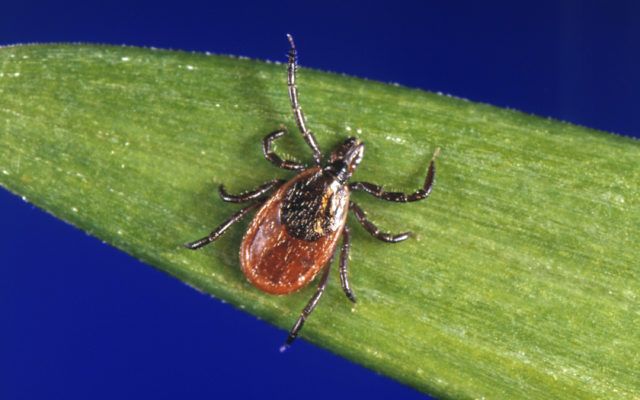
If you want to avoid ticks, stay away from mice
By Julia Bayly, Bangor Daily News Staff
Research is showing there is a connection between the tick populations, the mice populations and the spread of Lyme disease in Maine. All three have been on the rise across the state and there is no indication of them slowing down anytime soon.
Maine is home to several species of mice. Among them is the white-footed mouse, the primary carrier in New England of the bacteria that causes Lyme disease, according to Griffin Dill, who manages the tick lab at the University of Maine Cooperative Extension Diagnostic and Research Laboratory. Like many other small mammals, the white-footed mouse is also a primary food source for immature deer ticks. It’s by feeding on the blood of a Lyme disease-infected mouse that the immature ticks — also known as nymphs — become infected with the disease that they can then pass on as adult ticks to humans. Even though the mice carry the Lyme disease bacteria, Dill said the mouse itself is immune to the disease.
“The interconnectedness between ticks and mice is really profound,” Dill said. “Mice can really influence the number of ticks as well as the presence of Lyme disease.”
And one white-footed mouse can harbor a lot of tick nymphs.
“The white-footed mouse is not a particularly fastidious groomer,” Dill said. “They don’t seem to care if it has ticks all over it.”
The white-footed mouse is common in many places in North America. Their range extends along the Atlantic seaboard into Maine, west to Montana and south into Mexico.
“We are very much at the [northern] limit in Bangor,” said Alessio Mortelliti, associate professor of wildlife habitat conservation with the Wildlife, Fisheries and Conservation Biology department at the University of Maine. “We do believe the white-footed mouse range is expanding and even though we are seeing them in low numbers here, it is a symptom of the species expanding.”
The white-footed mouse looks much like another common mouse species in Maine — the deer mouse.
“The deer mouse is more of a northern species in Maine,” Dill said. “The white-footed mouse is confined more to the south and its northern limit is somewhere around Bangor, and that’s where you start seeing more deer mice.”
Warming temperatures and an abundant food supply are major factors in the northward spread of the white-footed mouse population, according to Dill. And it is bringing deer ticks northward, along for the ride.
Mortelliti has been studying mice populations in central Maine and is seeing an increase in the presence of white-footed mice, where his students have observed them in university forests on Marsh Island.
At this point Mortelliti said it is speculation, but he feels there are strong indicators that the expansion of the white-footed mouse in Maine is related to climate change.
“We are seeing increasing temperatures and changes in vegetation,” he said. “Those changes can facilitate the expansion of the species.”
Those warmer temperatures and conditions have created bumper crops of the seeds and acorns in Maine that the white-footed mice eat.
Even though deer mice tend to be in the northern part of the state and the white-footed mice more to the south, Dill said their ranges can overlap. While they do compete for food, there is no indication one species displaces the other in Maine.
It’s unclear if the deer mice play the same role as white-footed mice in the spread of deer ticks and Lyme disease, but Dill said the deer mice — along with other small mammals like chipmunks and squirrels — are also food sources for tick nymphs.
“These other species may not be as important in spreading deer ticks,” Dill said. “But they can help the tick’s lifecycle continue.”
Any role deer mice play in the spread of Lyme disease is something one of Mortelliti’s students is looking at in a study that will start this weekend and extend through the summer.
“There has been a lot of emphasis on white-footed mice and Lyme disease, but deer mice can also be a reservoir for the disease,” Mortelliti said. “We are going to look if we should be concerned with the spread of Lyme disease by deer mice because that is something no one has really studied in detail.”
The numbers of both deer and white-footed mice are booming in Maine, according to Dill.
“The past couple of years there have been high rodent populations,” said Dill. “I am getting numerous calls this year about rodents — we had a mild winter and an early spring so weather conditions are not going to set the mice back this year.”
Since more mice means more ticks, that’s bad news in terms of the tick population and spread of Lyme disease in Maine. Dill said this summer is already shaping up to be one of the heaviest tick seasons ever.
“To have a Lyme disease infected tick you need an infected mouse,” Dill said. “To have an infected mouse, you need an infected tick and we can’t say which comes first, but you do need both.”